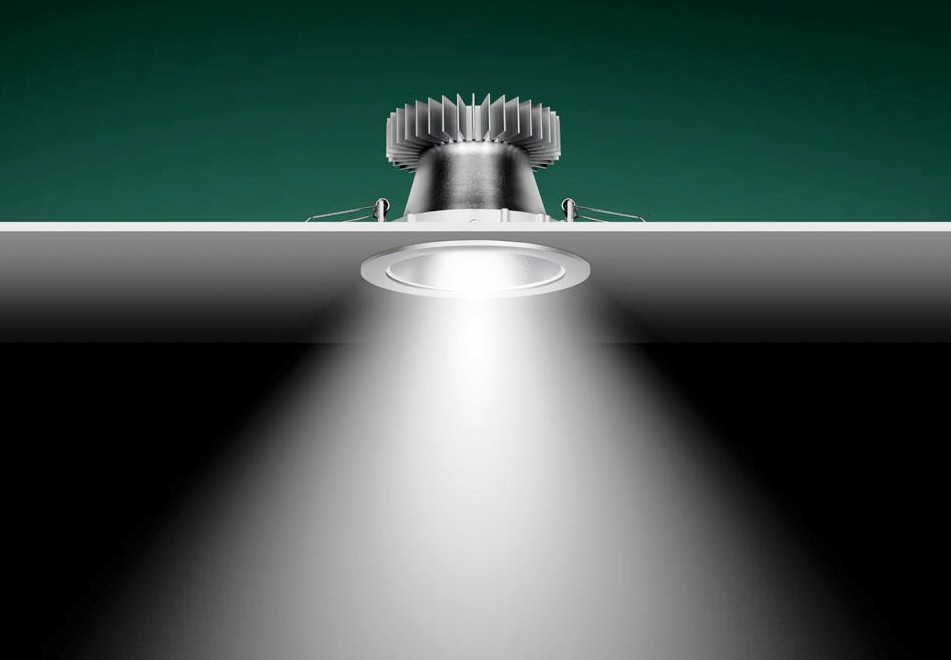Free shipping on orders over £50
TradeHURRY! SPRING SALE Now On! Get 10% Off Using Code KEEP10! Plus FREE SHIPPING On All Orders Over £50!
How To Choose The Correct Number Of LED Downlights
 When it comes to lighting any of the rooms in your house, the world is pretty much your oyster. LED downlights are a popular option because of their flexibility – you can create a focal point or you can combine them and light an entire room.
When it comes to lighting any of the rooms in your house, the world is pretty much your oyster. LED downlights are a popular option because of their flexibility – you can create a focal point or you can combine them and light an entire room.
If you choose to do the latter, the burning question becomes – how many?
The truth is that there is no simple answer to this question, as different rooms have different requirements. A room may need more or less light depending on its size, use and type of decor.
For example, a kitchen where food is prepared may need more light than say, a living room, which typically has more of a relaxed atmosphere.
Having said that, there are a few pointers we can give you as guidance, to help you achieve the perfect light level when using recessed LED downlights.
Make A Plan
“By failing to prepare, you are preparing to fail” goes the quote, and it couldn’t be more fitting when lighting your room. The first, and probably most basic thing you can do, is make a plan.
It doesn’t have to be fancy – just grab a sketch book and pencil, and create a blueprint of your room. Getting your ideas and plans down on paper beforehand makes things surprisingly easy later. You can work out exactly where you want your lights to go.
Don’t forget to include your furniture in the plan, as this is key for the next step.
Find Your Focal Points
As well as general ambience, downlights can be used to draw focus to particular areas of a room. Work out which areas need more light and use these as your starting point.
For example, if you are planning the layout in a bathroom, you may want to group lights above a sink where you need good visibility. Or if your recessed lights are going in a living room, you may have a specific reading chair that needs more light.
These lights should be positioned first, with the rest of the downlights planned around them.
 If you’re not sure about the level of light you need for any given room or activity, take a look at the table below for some extra guidance.
If you’re not sure about the level of light you need for any given room or activity, take a look at the table below for some extra guidance.
| Activity | Illumination in Lumens/m2 |
| Public areas with dark surroundings | 20-50 |
| Simple orientation for short visits | 50-100 |
| Working areas where visual tasks are occasionally performed | 100-150 |
| Warehouses, homes, theatres and archives | 150 |
| Easy office work and classes | 250 |
| Normal office work, PC work, library study, groceries, showrooms and laboratories | 500 |
| Supermarkets, mechanical workshops, office landscapes | 750 |
| Normal drawing work, detailed mechanical workshops, operation theatres | 1000 |
| Detailed drawing work and very detailed mechanical work | 1500-2000 |
| Performance of visual tasks of low contrast and very small size for prolonged periods of time | 2000-5000 |
| Performance of very prolonged and exacting visual tasks | 5000-10,000 |
| Performance of very special visual tasks of extremely low contrast and small size | 10,000-20,000 |
Follow The Ceiling Height Rule Of Thumb
A general rule of thumb for spacing your downlights is to take the height of your ceiling and divide by 2. For example, if your ceiling is 8 feet high, then your downlights should be around 4 feet apart from each other.
It is important to consider that this is only a very general rule and should be used with caution. You may want to space your fittings closer together or further apart based on how light or dark your decor is, the size and wattage of your fittings and the purpose of your lighting.
You should always remember though that it is better to ‘overlight’ your room, rather than risk not having enough light. Using a dimmer switch will then allow you to adjust the brightness level.
Please remember though that this will require a trailing edge dimmer. Using a leading edge dimmer isn’t guaranteed to work with LEDs, and could even damage the bulbs themselves.
Keep Your Distance
You should ideally leave a gap of 3 feet between the edge of your ceiling and your downlights.
The reason is simple – if your downlights are too close to the wall, they will create unwanted shadows which can actually make the room appear smaller than it is.
A distance of about 3 feet allows the light to reflect off the walls and makes the room feel lighter and airier.
If you need any further advice, speak to an expert from our team on 0116 321 4120, and they’ll be happy to assist you.






 Search
Search


